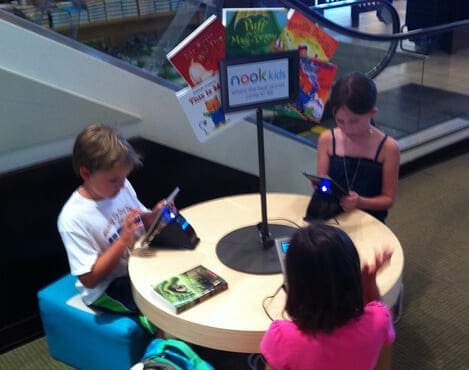Young children can achieve the same levels of comprehension and learning when reading in a digital format as compared to traditional books, says a new study.
Assessing the impact of the “video deficit,” which previous studies have shown can limit learning via digital means among infants and toddlers, researchers sought to understand how e-learning affects older children — specifically, those of preschool age.

They launched a learning test among 38 children aged 3 and 4, divided into two groups. One group interacted with two digital books, and the other group read aloud two print books with adults.
Overall, the researchers discovered that the two groups showed no significant differences in reading comprehension, vocabulary understanding, motivation to read and other important learning factors.
“What was most striking in our findings were the similarities, not the contrasts, in children’s responses to the medium of instruction,” said co-author Kevin M. Wong, a doctoral student in the Department of Teaching and Learning at New York University Steinhardt.
Related: Measuring Brainwaves May Predict Reading Success in Children
The researchers did find that the children’s comprehension levels differed across stories, but not delivery formats. Even with “sound, action and multimedia supports,” the digital books didn’t improve a child’s understanding of the story any better than traditional books.
“This suggests that neither medium was able to bolster children’s comprehension when the story was perceived to be difficult or not motivating, and it is the content of the book rather than its form that influenced story comprehension,” reports NYU Steinhardt.
Flattening Barriers
Some previous research has indicated that the rich-media environment of digital stories, with interactive features, might bolster a child’s understanding of what’s happening in a story. While the current study finds no evidence of that, researchers believe some students may benefit.
“Although nothing can replace the interactivity that comes from a live read aloud experience between an adult and child, there are certain features in video that might enhance word learning, especially for children with limited vocabulary,” said study co-author Susan B. Neuman, professor of Childhood and Literacy Education at NYU Steinhardt.
However, in light of the new study, the researchers are beginning to form a new theory on digital learning.

“It’s possible that when it comes to books, we have overestimated the means of delivery and have underestimated the importance of the content conveyed in the media. Although certainly not a substitute for parent-child interactive reading, digital stories from quality media sources may represent an important source of learning for young children,” Neuman said.
For the current study, the researchers asked children to recall elements of the story, including the setting, characters, main events and the ending. They also asked the children to put the scenes in correct sequence.
Related: Screen Time Could Lead to Increased Risk of Diabetes in Children
Children interacting with digital or print books performed equally well on the comprehension tests, leading researchers to believe that the “video deficit” seen among toddlers and infants may erode a few years later.
The researchers report that more than eight out of 10 children between the ages of 6 months and 6 years use some type of digital device everyday.
The study, recently presented at the American Educational Research Association’s annual meeting, should ease parents’ concerns about digital-book interactions.
Richard Scott is a health care reporter focusing on health policy and public health. Richard keeps tabs on national health trends from his Philadelphia location and is an active member of the Association of Health Care Journalists.


![How To: ‘Fix’ Crepey Skin [Watch]](https://cdn.vitalupdates.com/wp-content/uploads/2017/05/bhmdad.png)












